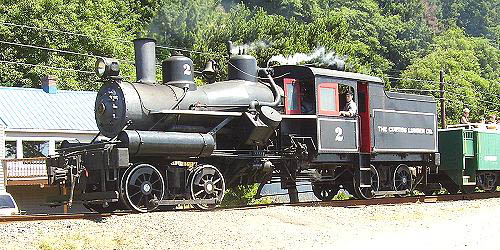HEISLER - THE BULL OF THE WOODS FOR 50 YEARS
- Andrew Fitz
- May 3, 2015
- 2 min read

Rough tracks and the ready Heisler
Moving logs was tough work in the mid-19th century and many operations began using railroads to speed production. With no need for permanent track, logging lines were built fast and cheap. Uneven roadbed, sharp curves and steep grades proved too much for conventional rod-driven engines. Loggers, engineers and inventors began developing gear-driven locos that could handle rough track and heavy loads. One of these would soon be known by the name of its inventor - Charles Heisler.
Initial design work began in 1890 while Heisler was working for Dunkirk Engineering. A year later, a North Carolina logger named F. A. Addington bought the first production engine. The new loco had two cylinders mounted crosswise at a 45-degree angle at the rear of the boiler, which allowed easy access for service and plenty of clearance. This V-type "motor engine" powered the "center drive" consisting of a crankshaft turning a driveshaft in the middle of the frame. Unlike competitor's engines with bevel gears on every axle, the Heisler only had them on the two outside axles and used small side rods to power each pair of drivers. This reduced the number of expensive moving parts, lowering costs and simplifying maintenance. Strangely, Dunkirk lost interest and never built another Heisler.
Production resumed in August 1894 when Heisler licensed his designs to the Stearns Manufacturing Company at Erie, Pennsylvania. Stearns offered a range of standard and narrow gauge models and by 1898, was building and selling a new loco each month. Heislers quickly developed a reputation as sure-footed, economical and powerful machines. There were many repeat buyers and some foreign sales. But Stearns closed in 1904. Production rights, patterns, jigs, tools and parts were purchased by a group of local businessmen in 1905 who formed the Stearns Company.
In 1907, this became the Heisler Locomotive Works. As sales of logging engines began to decline, the company sought new markets. By the 1920s, Heislers were working as in-plant switchers at strip mines, quarries, steel mills and other large industries. Hard-hit by the Depression, the company introduced a line of fireless 0-4-0, 0-6-0 and 0-8-0 steam storage switchers in 1934 that allowed them to remain in business. As World War II began, Heisler's small facilities and old machinery made it difficult to begin other types of manufacturing. In late 1940 the owners opted to close. Porter purchased the fireless locomotive line in 1941 and on April 10, 1941 the last Heisler sold (an 80-ton engine built in 1930) was shipped to new owners in West Virginia.
Perhaps the most fitting tribute to these rugged little engines comes from Heisler's own 1928 catalog: "For such work as switching around industrial plants, hauling logs through the woods over rough track and up steep switchbacks, pulling heavy ore or coal trains from the steam shovels - in heavy hauling of every kind - the Heisler has proven itself the ideal engine."
And the Heisler story continues. Of over 600 geared engines built, at least 30 survive today. Many are display pieces and others are awaiting restoration, but some are still in operating condition and see regular service on tourist lines.









Comments